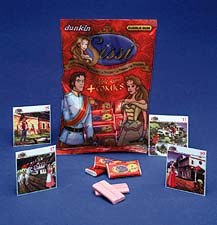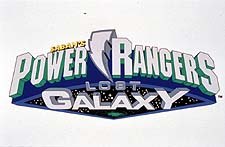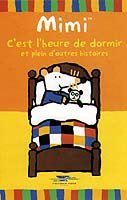With distribution outlets on the rise for animated programming in France, Valie Rivoallon reveals how both US and native companies are taking advantage of licensing and merchandising opportunities. Available in English and French.
Thanks to the multiplication of distribution sources (film, television, video), animation can support itself on a considerable market. Even though animation in France only represents a fifth of the production aided by COSIP (Support Funding for Audio-Visual Programs), it nonetheless accounts for a third of all exported programs. This strong position has had repercussions on the business development of licensing and the products spun off from animation, which we have seen gradually open through many venues. Following in the footsteps of the major American companies like Disney and Warner (to name only a few), who engage in a ceaseless, merciless commercial war, the most important French production companies Ellipse, Gaumont and Saban International Paris have integrated their own structure for the management of derivative rights. Plus, there are also many independent companies of greater or smaller scope, each of which has its own strategy for dealing with the perpetual arrival of new heroes. The Disney Presence Disney is the precursor of derivative products in France, starting with the appearance of Mickey Magazine in 1934. In the six decades since then, the company has had plenty of time to think in great depth about how to grasp the heart of the matter, and has allied itself with the greatest names in publishing and distribution. With some fifteen titles boasting more than 20 million copies sold each year, Disney Hachette Publishing (D.H.P.) is the leading publisher for children. From the youngest age of only one year-old, children are initiated into the discovery of Disneyana with three different magazines: Bambi, Winnie and Little Wolf, each of which sets out to educate and amuse. Mickey and Picsou Magazine are preferred reading for the 9 to 13 age group, both with a print run of more than 200,000 copies for each issue. Moreover one must add to that Disney Hachette's publication of a library of almost 300 titles divided into some 20 collections. Each year they also sell more than a million books devoted to their most recent feature film. Then, in addition to the book publishing, one must count music publishing, since Walt Disney Records also attains the summit of a million units sold annually in France, in all the various formats, including CDs and cassettes. Such an omnipresence derives from strong distribution as much in film as in video (including video-cassette sales and the Disney Parade program broadcast every week on the leading TV station TF1), which includes another coup for the sale of derivative products in that they benefit from their own network of commercialization: The Disney Store. While the first Disney Store, created from a concept of Michael Eisner's, was opened in 1987 in California, the first European Disney boutique waited another three years to open in London. Aside from England, France and Spain were the two largest markets targeted in Europe. The Disney Store on the Champs Elysees has already proved itself, since it was ranked in 1998 as one of the most profitable businesses worldwide.
France's Contenders
Nonetheless, long before that Disney was forced to see little by little parts of its market being nibbled away by the abundance of rival products coming from more and more experienced companies. VIP, created in 1968 by Jean-Michel Biard (until then responsible for marketing products derived from the French television network ORTF), holds the rights to some 40 characters, brands or series. In its catalogue: The Pink Panther, who celebrates his 35th birthday this year, as well as the 30th anniversary of his television career, which spans 236 animated episodes; Snoopy, who celebrated his 50th anniversary last month during an affair involving 740 McDonalds Hamburger restaurants, plus an exhibition will be devoted to him at the next Comics Festival at Angouleme in January 2000; Felix the Cat, popular again since the latest music-video from Gloria Gaynor "I Will Survive" made him a part of the family; as well as Dilbert, the supreme anti-hero, who will be broadcast on French television soon. Then there's also Zorro, the Ninja Turtles, Robocop and Arthur, which France's television station 3 has chosen to get the kids ready to go back to school. There's also the truculent Bob and Margaret from Alison Snowden and David Fine, which the public got to know thanks to Bob's Birthday, which was distributed in theatres as a short to accompany the French-Canadian short film by Sylvain Chomet, The Old Lady and the Pigeons.

To make the most of all these heroes' images, VIP has recently devoted itself to two particularly efficient tools. The first bears the name Extension 21, an agency for the promotion of sales, which offers quite diverse plans for launching new products in any sector of activity -- food, health and beauty, hifi-video, tools and crafts, games, etc. -- by offering personalized mail order items, free gifts at shops, to events in malls and stores like character appearances to make the sales outlet more lively and exciting. The second tool is the publishing house Centlys, created in January 1999, whose two objectives are first to engage in traditional publishing ventures (last June this branch published, in collaboration with Lecureuil, the latest issue of the adventures of the Crao heroes, The Marriage of Rahan,) and secondly the publishing of different types of books designed to promote a project directly or indirectly. In this category we find among the latest publications, a collection of books and anthologies of stories devoted to the series Live Goose Bumps made by Quick, and Fat Old Man, a Zorro comic book commissioned from Panzani.
Ellipse Licensing, founded in 1988, manages a catalogue of rights derived largely from audiovisual productions, some originating with Ellipse and some not. These rights are meant to be ceded in the form of licenses to manufacture goods, principally in Europe. The company is structured in two rival levels: one acquires rights to the newest hit properties with international acclaim, such as South Park and Teletubbies, while the other is occupied with the current status of classic cartoon heroes such as Babar and Oui-Oui. From an organizational point of view, the company is allied today with the television station Canal + Images. This integration into the heart of the Canal+ network permits them to develop synergies inside the group. From then on licensing gathers all of its meaning in complementarity with production, music and video publishing, multimedia and the distribution of programs internationally, as well as in France.

Saban International presents much the same profile, since the French branch was founded 10 years ago to distribute Saban products on the continent, and to produce and distribute some European-styled series on an international level. Having at its disposal not only the regular airwave broadcasts but also its own network for distribution via cable/satellite through Fox Kids, it develops a marketing plan on a world-wide scale for each production, as Franck Algard, head of the licensing department, explains: "Our circumstances are quite different from those of licensing agents because we don't have to amortize commissions. So we can concentrate on a smaller number of productions -- right now, just Power Rangers and Addams Family -- which we work with all up-stream, with, for example, partners such as Mattel, Hasbro, Bandai or Giosi Preciosi for toys. As soon as the project is elaborated, we meet and define together the range of products at which to aim the target. To launch a series is the same as launching an automobile or a canned-good: you can't allow yourself to work on a small scale anymore, especially in view of the multiplication of chains and the concentration of enterprises. The choice of licenses for the industrialist is more and more difficult, because the campaign is more and more important not only on the level of animation, but also on the level of events -- I'm thinking of sports, for example. They don't have the means to develop several gamuts simultaneously, so they can't afford to be wrong..."

Crushing Competition
In such a realm, the producers don't have an easy choice, and most prefer to rely on proven commodities, most often derived from popular literature or successful comic books. On the shelves of toys that represent on average the better part of licensing receipts arising from animation, enthroned in majesty aside Winnie the Pooh, are: Tintin, Lucky Luke, Babar, and Obelix, leaving a little room for the Rugrats and Mimi, that astonishing little mouse created by British author Lucy Cousins, but discovered in France and made popular thanks to the lively books published by Albin Michel. Models offer even a larger selection, including all the Looney Tunes characters and the Dupuis comic books, as well as the irresistible Shadoks, heroes of a cult series created by Jacques Rouxel in 1968. Managed by the L'Oeuf company, a little family enterprise, the sale of rights has generated many items, including comic books, CD-Roms, post cards, neckties (more than 30 types for all tastes and seasons), socks, tableware, wrist-watches, alarm clocks, grandfather clocks, figurines (Pixi), as well as caps, tee-shirts, pajamas and sleeping bags (Wilsa Sport). In this soaring world-wide market, France has made a place for itself. Today France is the leader on the continent, with an annual business income in the neighborhood of 5 billion dollars (25% of the European communal income). But this market is nonetheless difficult to penetrate, especially for little businesses that often lack the means to devote to the complex questions of marketing, which don't always jibe with artistic creativity. Originally a screenwriter, Valerie Rivoallon has worked in journalism since 1988. On the editorial staff of BREF, a magazine devoted to the short film, she has specialized in animation since 1993. She has also organized programs for several festivals, and works on the radio. Her monthly animation program is called Bulles de rêve.








